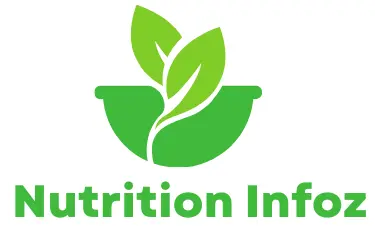There are many myths about raw food diets. Many people think that they should feed raw bones for calcium, and there are many myths about raw feeding and the methodology for chewing raw prey.
Raw meat has its advantages, but everything has myths that are kind of misleading about nutrition, safety, and health. Some points are that raw meat and bones sometimes contain salmonella. Raw diets are popular but full of myths, which will be discussed in this article. Let us demystify some of the myths about raw food diets today.
Is Raw Food Safe for Everyone?
One common myth about raw food is that it’s safe for everyone. Many raw diets may not suit all age groups or ensure adequate nutrient intake. Raw food is good for many people, but individuals with weak immune systems are advised to cook their foods well to ensure their stomachs can break down and absorb the nutrients, such as when feeding on raw meat.
Some foods become safer to eat when they are cooked well and have killed bacteria on them. Raw diets are not suitable for everyone, especially children and elderly people, who may require additional nutrients to support their organ health.
Types of Raw Diet: Best Raw Food Diet to be More Healthier
Do You Get Enough Nutrients from Raw Food?
A widespread myth is that raw food always provides more nutrients, ignoring the benefits of cooking certain meats, which can enhance their phosphorus content and make them safer to chew for dogs and cats.
While some raw foods offer rich nutrients, others, like certain meats, might need cooking to release more vitamins and minerals essential for proper digestion. Cooking tomatoes, for example, boosts their lycopene content, which has health benefits, but raw feeding can also provide nutritious options, including raw vegan diet choices.
Is Cooking Always Bad for Food?

As much as many people think that cooking reduces or eliminates nutrients, this is only partially correct. Some vegetables, such as carrots or spinach, are enriched more after cooking than before to ease their digestion and absorption. In addition to cooked food, a significant amount of raw food should be consumed because a mostly raw vegan diet is most beneficial. re nutrient-rich after being cooked, aiding their digestion and nutrient availability. It’s important to balance cooked and raw food for optimal health, especially when considering a mostly vegan diet.
Does Raw Food Help with Weight Loss?
Raw food can help with weight loss, but it is not a magic solution. Some people believe a raw food diet burns more fat, but this depends on how balanced the overall diet is, particularly when considering the needs of pets. While raw foods are generally low-calorie, over-relying on them can lead to imbalanced nutrition in a diet without cooked foods, particularly for dogs and cats.
Are Raw Food Diets Suitable for All Age Groups?
Not all raw food diets, including those with raw meat and bones, are safe for every age, especially considering the protein sources involved. Kids, pregnant women, and seniors may need extra nutrients that raw foods don’t fully provide, so it’s important to alter their diets to ensure a balanced diet. While raw foods have benefits, it’s important to balance them with cooked meals for a complete diet, especially to help digest certain nutrients.
Is a Raw Food Diet Expensive?
Contrary to the belief that raw food diets are expensive, there are many opportunities to get nutrients and various ingredients and be healthy. However, this is not always the right statement regarding the prehistoric diet of dogs and cats.
Fresh fruits, vegetables, and seeds can be quite affordable if sourced locally or grown at home, making raw feeding an accessible choice for pet owners as well. You don’t need exotic, expensive ingredients to follow a raw food lifestyle, as many affordable protein sources can be eaten raw.
Do Raw Food Diets Require Special Equipment?
Many think that myths about raw food diets demand fancy equipment, but simple food handling techniques can often suffice. While a blender or dehydrator helps, they are not essential for preparing raw meals or feeding raw meat. Simple kitchen tools can suffice to prepare most raw meals, as they do not require complex food handling processes.
Bullet Point Summary:
- Raw food isn’t always safe for everyone, especially if they have a sensitive digestive system that struggles to digest certain raw ingredients. Risks include salmonella.
- Some nutrients, particularly grains and legumes, need cooking for complete absorption. This is crucial to debunking raw feeding myths associated with a diet without adequate cooking for optimal nutrition.
- Cooking certain foods can enhance their nutritional value, but raw bones can provide essential calcium and phosphorus when included in a balanced raw diet for dogs and cats.
- Raw food can assist in weight loss, but balance is key, particularly for those needing more nutrients to digest their meals properly.
- Raw diets may not provide all the necessary nutrients for kids, pregnant women, or seniors.
- Raw food diets can be budget-friendly with local produce, particularly when including raw meat and bones as protein sources to supplement one’s diet.
- Special equipment for myths about raw food preparation is optional, not mandatory, but some may choose to use tools that help dehydrate fruits and vegetables for their raw vegan diet.

Short Questions/Answers:
Is raw food always safe?
Not for everyone, especially those with weak immune systems.
Does raw food contain more nutrients?
Not always; cooking can enhance certain nutrients, which is important for optimal nutrition.
Cooper asked in this piece whether cooking eliminates the nutritive value in foods.
Although some foods are healthier when cooked, raw meat still offers consumers adequate protein quality and an essential amino acid profile.
Does raw food help lose weight?
It can, but balanced with other food groups is essential to maintain a healthy diet without deficiencies.
Are raw diets suitable for children?
Children need cooked meats to support their growth and organ development. Cooked meat can sometimes provide additional nutrients compared to raw feeding, similar to how dogs and cats thrive on a balanced diet.
Is raw food expensive?
No, it can be affordable with local or homegrown produce, especially for those going raw.
Do raw food diets require special equipment?
No, basic kitchen tools are sufficient for those who consume raw diets, but some may prefer specialized equipment for convenience in food handling.




Leave feedback about this